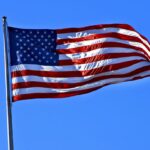Honey bees are fascinating creatures, and their dedication to finding food for their colony is truly remarkable. Have you ever wondered how far these tiny insects travel in their quest for nectar and pollen? The distance a honey bee flies for food is a critical aspect of their survival and the overall health of the hive.
The Foraging Range of Honey Bees
While it’s possible for honey bees to venture as far as 5 miles (8 kilometers) in search of sustenance, the average foraging distance is usually much shorter, typically less than a mile (1.6 kilometers) from the hive. This shorter range is more energy-efficient, allowing bees to maximize their foraging efforts while minimizing travel time and energy expenditure.
A strong, healthy colony can consist of around 60,000 bees. Considering their combined foraging efforts, this colony can collectively fly the equivalent distance from Earth to the Moon every single day! This highlights the immense scale of their foraging activities and the crucial role they play in pollination.
Speed and Load
When heading out to find food, a worker bee can reach a top speed of approximately 15-20 mph (21-28 km/h). However, their return journey is a bit slower, averaging around 12 mph (17 km/h). This is because they are heavily laden with nectar, pollen, propolis (a resin collected from tree buds), or water, all essential resources for the hive.
Navigation Skills
Honey bees possess incredible navigation skills that allow them to efficiently locate and return to food sources. They primarily use the position of the sun as a guide, and there is evidence suggesting they are also sensitive to the Earth’s magnetic field. Furthermore, their eyes are sensitive to polarized light, which penetrates even thick cloud cover, enabling them to “see” the sun even in poor weather conditions.
In addition to their two large compound eyes, bees have three smaller eyes called ocelli located on the top of their head. These ocelli detect the transition from darkness to light, helping them determine the horizon. By sensing changes in the horizon’s position, bees can adjust their wing angles to maintain a level flight path, maximizing their distance traveled over a shorter period.
Color Vision and Floral Preferences
Honey bees have a unique color vision system that influences their foraging preferences. Their compound eyes are more sensitive to the blue end of the light spectrum and into ultraviolet. Flowers that reflect large amounts of ultraviolet light appear very bright to bees, making them highly attractive. On the other hand, bees are completely red-blind. If you are planting a bee garden, consider planting more blue and UV reflective flowers.
Supporting Honey Bee Research
Understanding the foraging behavior of honey bees is essential for protecting these vital pollinators. You can contribute to ongoing research efforts by donating to organizations like the British Beekeepers’ Association (BBKA).
The BBKA’s charitable object is to advance the education of the public and beekeepers in the craft of beekeeping and promote the importance of bees in the environment. Donations can be made to support initiatives such as Save the Bees or Apiary and Education programs. By supporting honey bee research, we can help ensure their survival and the health of our ecosystems.
